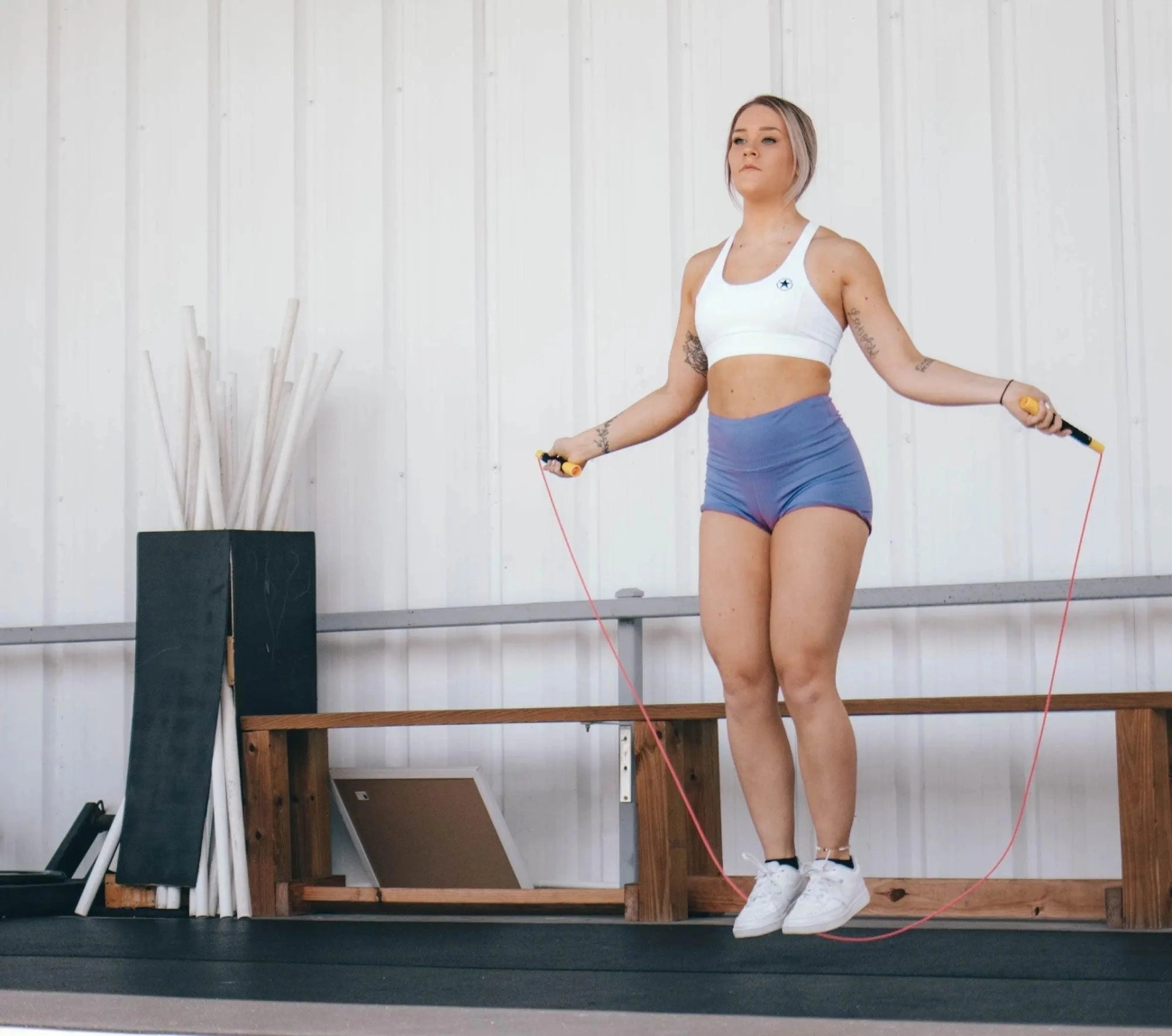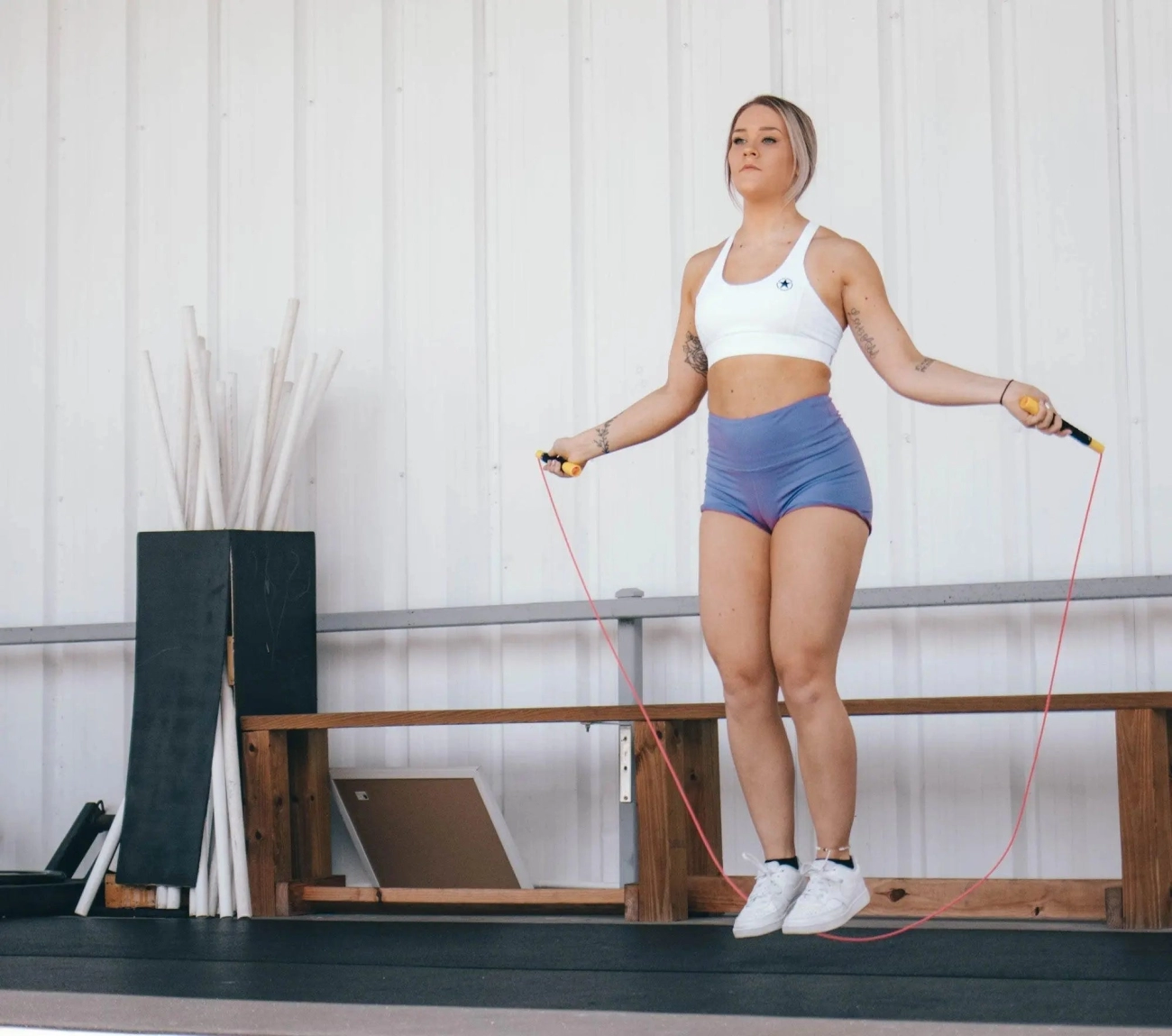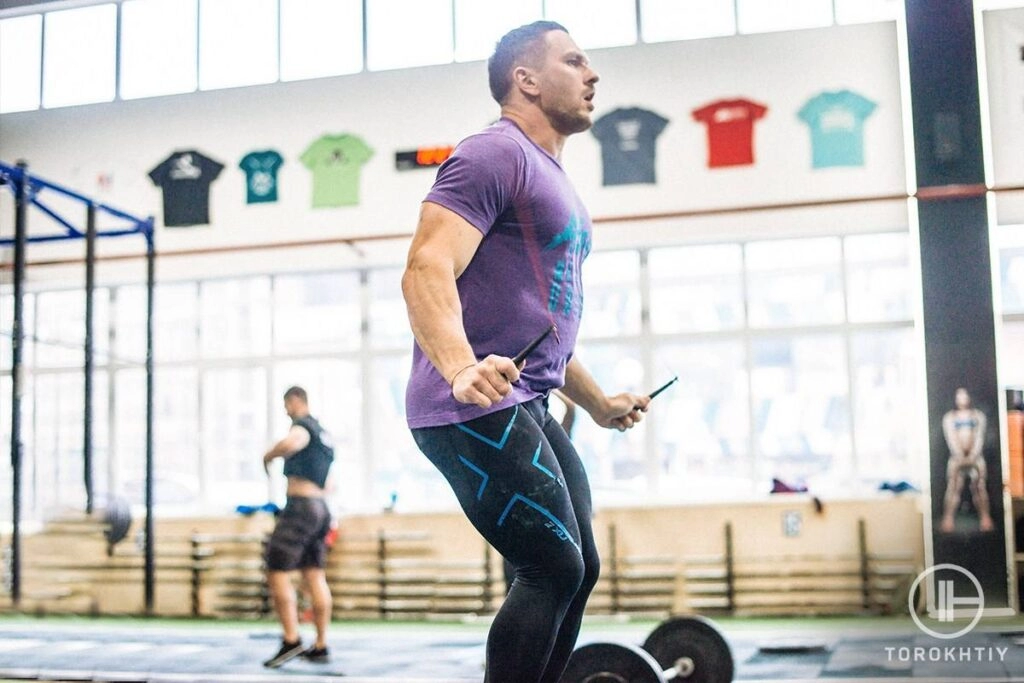Why the Right Jump Rope Length Matters for Performance and Safety
Choosing the correct jump rope length for your height is crucial to maximize your workout benefits, prevent injuries, and improve exercise efficiency. Using a rope that’s too long or too short can negatively impact your performance and overall experience.
Performance Benefits of Proper Jump Rope Length
- Better rhythm and timing: The right rope length helps maintain a steady pace, making it easier to execute smooth and consistent jumps.
- Improved speed and agility: With a properly sized rope, you can quickly adjust foot placement and jump rope faster, which is essential for workouts like double unders and high-intensity interval training.
- Enhanced workout efficiency: A well-measured rope allows you to keep a comfortable flow, reducing unnecessary tripping or frequent stops, helping you get the most out of your session.
Injury Prevention with Correct Sizing
- Reduced risk of tripping or stumbling: A rope that is too long may catch your feet, leading to falls or twisted ankles.
- Less strain on joints: Using a rope that is too short forces you to lift your arms and wrists awkwardly, which can cause wrist or shoulder pain over time.
- Balanced body mechanics: Proper rope length supports natural movement patterns, lowering the chance of repetitive strain injuries.
Common Issues from Incorrect Jump Rope Length
- Frequent rope tangling or catching: An improperly sized rope can slow you down and break your focus.
- Frustration and reduced motivation: Repeated mishaps caused by poor rope length may discourage consistent practice, especially for beginners.
- Poor form and inefficient workouts: To compensate for an ill-fitting rope, you might modify your jumps in ways that limit the exercise benefits.
Getting your jump rope length right is the foundation for a smooth, effective, and safe workout. It supports better technique and keeps you motivated to stick with your training plan. Stay tuned for the next section where we’ll guide you step-by-step on how to measure your jump rope length for the best fit.
How to Measure Your Jump Rope Length Step by Step Guide

Measuring the correct jump rope length is key to improving your performance and avoiding injury. Here’s a straightforward guide on how to size a jump rope properly, including tips for adjustable PVC jump ropes and testing length before you start.
Prepare Your Jump Rope
Before measuring, untangle the rope completely and lay it flat on the ground or hold it straight up. Make sure the handles are attached as you would use them during your workout.
Basic Measuring Method Using Your Height
The simplest way to measure jump rope length is by using your height as a guide:
- Stand on the middle of the rope with one foot.
- Pull both handles straight up alongside your body.
- The top of the handles should reach between your armpits and shoulders depending on your skill level:
- Beginners usually prefer the rope to reach near the armpits.
- More advanced users can have the handles closer to the shoulders for quicker rotations.
This method offers a quick jump rope sizing guide based on your height, making it perfect if you’re just starting.
Alternative Measuring Method Arm Span or Flooring Method
If you want a different approach:
- Arm Span Method: Extend your arms wide, holding the handles in each hand, and measure the length between your hands. This helps customize the length to your reach.
- Flooring Method: Lay the rope flat on the floor and measure from one handle’s end to the other to ensure the rope suits your workout space and style.
Using a Measuring Tape Directly
For the most precise measurement:
- Use a measuring tape to measure the entire jump rope’s length from handle end to handle end.
- Compare this length against a jump rope length chart tailored for your height or skill to see if it fits your needs.
- This method is especially helpful for custom or fixed-length ropes without easy length adjustment options.
Adjusting Length on Adjustable PVC Jump Ropes
Many PVC jump ropes include an adjustable mechanism to customize the size:
- Open the handles or locate the screws/clips holding the rope.
- Slide the rope through to shorten or lengthen it.
- Cut off any excess rope beyond the handle if necessary, but leave some extra so you can adjust again later if needed.
- Ensure the rope is secured tightly so it won’t slip during use.
Proper adjustment helps the rope spin smoothly, ensuring better performance and less chance of tripping.
Testing Your Jump Rope Length
After adjusting, test your rope by doing a few jumps:
- Check if the rope swings easily without dragging on the floor.
- Ensure the handles feel comfortable in your hands.
- Make sure you have enough clearance over your head and under your feet for smooth rotations.
If it feels off, don’t hesitate to re-measure and fine-tune the length. Getting the right jump rope length is essential for efficient workouts like double unders or tricks.
Tips for Choosing the Right Jump Rope from PVCJumpRope.com
When it comes to picking the correct jump rope length for your height and skill level, PVCJumpRope.com offers a great range of options designed to fit your needs perfectly. As a leading PVC jump rope manufacturer, PVCJumpRope.com focuses on durability, customization, and performance, making it easy to find a rope that works well whether you’re a beginner or an advanced jumper.
Customization and Adjustable Lengths
One of the biggest advantages of choosing a PVCJumpRope.com jump rope is their adjustable jump rope length feature. Many of their ropes come with easy-to-use adjustment systems that let you customize jump rope size quickly. This is key if you want your rope to be just right—too long or too short can trip you up or slow your exercise efficiency.
- Adjustable PVC jump ropes allow you to cut and lock the rope length precisely.
- Handles are designed to accommodate changes without impacting grip or control.
- This customization makes PVCJumpRope.com ropes ideal for various jump rope styles, including double unders or tricks where rope length matters.
Material Benefits of PVC
PVCJumpRope.com specializes in PVC jump ropes known for their durability and smooth rotation. The PVC material is:
- Lightweight yet sturdy, reducing wrist fatigue during workouts.
- Resistant to wear, even with frequent outdoor use.
- Smooth enough to enable fast, consistent spins—essential for improving timing and rhythm.
These features combine to make PVCJumpRope.com jump ropes a smart investment for anyone serious about jump rope training. You get the performance benefits of a rope that moves smoothly with you and the convenience of adjusting its length as you grow or try new techniques.
For those looking for a quality jump rope that adapts to your workout style and body, PVCJumpRope.com’s PVC ropes strike the perfect balance between customization and long-lasting performance.
If you want to learn more about choosing the best jump rope or explore different jump rope models, check out our jump rope sizing guide for detailed recommendations tailored to your height and skill level.
Frequently Asked Questions About How to Measure Jump Rope Length
Can I Use a Longer or Shorter Rope for Tricks or Double Unders
Yes, using a longer or shorter jump rope can impact your performance, especially for tricks and double unders.
- Longer rope: Gives you more room for timing and clearance, good for beginners or slower tricks.
- Shorter rope: Allows for faster rotations, ideal for advanced jumpers doing double unders or speed work.
- However, don’t stray too far from your recommended size — a rope that’s too long or short can cause tripping or make timing tough, leading to frustration and potential injury.
If you’re focusing on double unders, aim for a slightly shorter rope than your standard length. This helps increase speed without sacrificing control.
How Often Should I Measure My Jump Rope Length
It’s a good practice to check your rope length regularly, especially if you:
- Switch between different jump ropes.
- Share ropes with others.
- Notice your performance or comfort declining.
- Change your jump style or move into new techniques (like double unders or speed jumps).
Aim to measure your rope at least every few months, or whenever you feel the rope is off in performance. Proper sizing keeps your workout smooth and helps prevent injuries from bad posture or timing.
What If I’m Between Sizes When Measuring My Jump Rope
If your measurement is between two standard sizes, here’s what to consider:
- Go slightly longer if you’re a beginner. The extra length helps avoid tripping and gives you room to learn.
- Choose the shorter length if you’re confident or training for speed and tricks; it offers quicker rope rotation.
- Remember, many adjustable jump ropes make fine-tuning easy, so you can customize the length over time.
If you feel unsure, PVCJumpRope.com jump ropes offer flexible length adjustment options, helping you find the perfect fit as you progress.
Keeping your jump rope length optimized is key to effective workouts and injury prevention. Feel free to revisit your rope size as your skills improve or your workout goals change!



